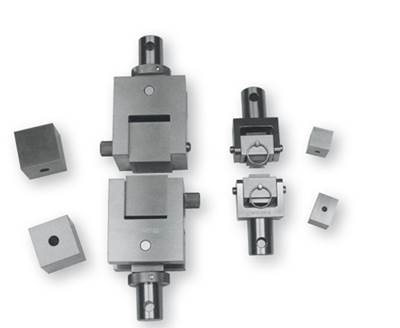Design and Testing
Block shear strength of adhesive bonds
Dr. Don Adams describes two methods (ASTM D 905 and ASTM D 4501) for loading adhesive bonds in direct shear while minimizing undesirable peel and through-thickness tensile stresses.
Read MoreAdditional grip types for tensile test specimens
Dr. Don Adams follows up a previous discussion of wedge grips for testing tensile specimens with a sampling of other grip types.
Read MoreShear test methods: Iosipescu vs. V-Notched Rail
Dr. Don Adams asks and suggests a likely answer to the question Which shear test method is best?
Read MoreA comparison of shear test methods
Dr. Don Adams compares the shear test methods that are currently available to the composite industry.
Read MoreV-Notch Rail Shear test (ASTM D 7078-05)
Dr. Don Adams introduces HPC readers to the The V-Notched Rail shear test method, approved as ASTM Standard D 7078-05 by ASTM Committee D-30 in March of 2005.
Read MoreDirect measurement of laminate through-thickness tensile strength
Although there are indirect methods for determining the through-thickness tensile strength of a solid laminate direct loading can be achieved, using ASTM test methods.
Read MoreMixed-mode fracture toughness of composites
During the 1970s, fracture toughness testing of composite materials developed a very poor reputation, primarily due to failed attempts to directly adopt metals theory and corresponding test methods. However, the basic principles of fracture mechanics remained valid.
Read MoreCompression platens and subpresses
Dr. Don Adams discusses the use of compression platens (fixed and spherical seat) and subpresses to ensure reliable test frame operation.
Read MoreNeat resin specimen fabrication aids
To obtain quality experimental data, one must have access to quality test specimens.
Read MoreFastener pull-through strength test method
Mechanical fasteners have been used to join wood and metal plates for hundreds of years.
Read More


















